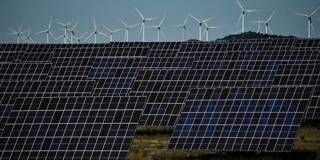American, Chinese, and European policymakers seem convinced that supporting high-tech green industries is the key not only to a sustainable future, but also to a prosperous one. But the idea that green tech could form the foundation of a major economy is unrealistic.
MILAN – US President Joe Biden’s administration included generous green subsidies in the Inflation Reduction Act, which aims to build a “clean-energy economy powered by American innovators.” Former European Central Bank President and Italian Prime Minister Mario Draghi has delivered an influential report to the European Commission arguing that the European economy’s future depends on a dual competitiveness and decarbonization strategy. And China has invested heavily in turning the “new three” industries – solar photovoltaic, lithium-ion batteries, and electric vehicles (EVs) – into export engines.

MILAN – US President Joe Biden’s administration included generous green subsidies in the Inflation Reduction Act, which aims to build a “clean-energy economy powered by American innovators.” Former European Central Bank President and Italian Prime Minister Mario Draghi has delivered an influential report to the European Commission arguing that the European economy’s future depends on a dual competitiveness and decarbonization strategy. And China has invested heavily in turning the “new three” industries – solar photovoltaic, lithium-ion batteries, and electric vehicles (EVs) – into export engines.